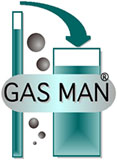
APSF Technology Education Initiative (TEI) : Low-Flow Anesthesia (LFA)
| Table of Contents |
This course consists of 8 topics designed to empower the anesthesia professional with the knowledge required to safely and effectively reduce anesthetic waste and pollution through the practice of low-flow anesthesia. Using guided, simulation-based learning, basic concepts of low-flow anesthesia are explored along with strategies for reducing fresh gas flow during the induction, maintenance and emergence phases of inhalation anesthesia. Each topic is designed for about a 15 minute interaction but the motivated learner is encouraged to utilize the simulation platform to explore different strategies and reinforce the learning. The topics are designed to be followed in sequence but do not need to be done at the same time. The course is free of charge to all anesthesia professionals but a guest login is required for non-ASA members. Continuing education credits are available to physicians, nurses and anesthesia assistants. For physicians enrolled in the MOCA process, the CME credits are patient safety eligible.
- Click here to take an Introductory Tour of the Simulation Platform
- Click here to take the Low-Flow Anesthesia course on the ASA website
(This link navigates away from the APSF website to the ASA website to sign-in and access the course.)
Non-ASA members can create a Guest account at no charge. ASA members use your member login credentials. - Translations:
- Click here for an unguided version of the low-flow anesthesia model and simulation
This unguided version provides access to all the functions of the model and simulation and is intended for learners and instructors. The guided course is recommended for everyone as a route to understanding the principles of low-flow anesthesia. With this unguided version, learners can explore different scenarios for induction, maintenance and emergence and visualize the associated anesthetic waste and the impact on oxygen and anesthetic concentrations. Instructors can use the model and simulation to demonstrate principles of low-flow anesthesia. Enjoy this convenient learning and teaching tool!
ADDITIONAL RESOURCES ON LOW-FLOW ANESTHESIA
- ASA Issues Statement Supporting Low-Flow Anesthesia with Sevoflurane
The American Society of Anesthesiologists Committee on Standards and Practice Parameters recently issued a statement recognizing that the current Sevoflurane labeling for minimum fresh gas flow is medically obsolete. Current guidance states that:“The use of low FGF with sevoflurane has been extensively studied, is a safe practice, and has economic and environmental benefits. The ASA has evaluated current scientific studies and concludes there is no reasonable evidence to support a lower limit of fresh gas flow when using sevoflurane. Therefore, the ASA supports the use of low fresh gas flows when sevoflurane is administered.”The complete statement including the cited references can be found after signing in to the ASA website at: Statement on the Use of Low Gas Flows for Sevoflurane
- Global Warming—Blame Anesthesia?
by Elizabeth E Hansen, MD, PhD
A Primer on the Environmental Rationale for the Practice of Low-Flow Anesthesia
The environmental impacts of greenhouse gases (GHG) are well known and include planetary warming causing rising sea levels and extreme weather events. Morbidity and mortality are associated with the resulting changes in vector ecology, food and water insecurity, extreme heat, increasing allergens, environmental degradation, and air pollution. Inhaled anesthetics are potent greenhouse gases (GHG) and contribute to the climate crisis. - “Technology and Low-Flow Anesthesia Practice”
by Jeffrey M. Feldman, MD, MSE, Jan Hendrickx, MD, PhD, and Ross Kennedy, MD, PhD
Technology Solutions Supporting a Low-Flow Anesthesia Practice
A variety of different tools are built into anesthesia workstations to facilitate reducing fresh gas flow. These tools have both benefits and limitations. This white paper describes the various types of technology solutions available from different companies with an emphasis on how they can be employed in practice. - Is Rebreathing Prevented when FGF Equals MV?
by Jeffrey M. Feldman, MD, MSE, Samsun Lampotang, PhD, FSSH, FAIMBE, and Jan Hendrickx, MD, PhD
Exploring the Fresh Gas Flow-Minute Ventilation Threshold for Rebreathing
This paper explores the rule of thumb that rebreathing is eliminated in a circle system when fresh gas flow equals minute ventilation. In reality, the threshold for eliminating rebreathing may be slightly above or below minute ventilation depending upon the anesthesia delivery system. Nevertheless, the rule of thumb remains a practical guideline for setting fresh gas flow. Monitoring both oxygen and anesthetic concentrations are always important for ensuring that the desired clinical results are obtained.  Gas Man® Computer Education Tools
Gas Man® Computer Education Tools
Use Gas Man® for in depth learning on uptake and distribution of inhaled anesthetics. It is available free of charge and highly recommended for the serious student.
MANUFACTURER INFORMATION ON LOW-FLOW ANESTHESIA

Dräger
Low-Flow Anaesthesia – YouTube

GE Healthcare
Low-flow Anesthesia Series: Part 1 – Dilution Effect of Rebreathing
![]()
Getinge
Getinge Educational Institute Customer Education Portal

